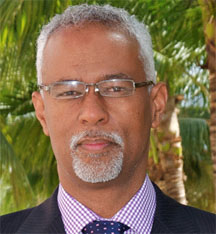The Caribbean is the only developing region that has approached near-universal provision of medication to prevent the transmission of the HIV virus from mother to child, according to the annual UNAIDS report on AIDS but it also names Guyana as one of several countries that have seen increases in risky sexual behaviour.
This year’s Annual World AIDS Day report also says that children born with HIV declined significantly in the Caribbean from 2009 to 2011 by 32% and that the sharpest decline in new HIV infections was seen in the Caribbean, down 42% between 2001 and 2011. There was also a decline of 48% (representing the highest decline of any region) in AIDS-related deaths in the Caribbean between 2005 and 2011. It said that this was a result of the fact that 67% of persons living with HIV in the Caribbean now access the needed antiretroviral drugs.

The report however cautions that in order to achieve gains across the board there must be a renewed drive to sustain the region’s response and reach those communities most at risk.
“There have been profound advances over the last decade but in order to sustain them, Caribbean governments need to put more money and effort towards ensuring that their HIV programmes can be maintained. It is in the national interest”, UNAIDS Caribbean Regional Support Team Director Dr Ernest Massiah said in a UNAIDS press release.
The press release on the report said eliminating mother-to-child transmission of HIV, the virus which causes AIDS, is feasible in the Caribbean with continued efforts to address stigma and discrimination and targeted interventions to reach more women, particularly those in the Dominican Republic and Haiti.
“If you are pregnant, go to your antenatal clinic early and ask for an HIV test. If you are HIV positive we can prevent your baby from being born with the virus and ensure that you get the treatment you need to live a long and healthy life,” UNAIDS Caribbean Regional Support Team Director Dr Ernest Massiah said in the release.
However, the release said that while the region has seen marked improvements in the above listed areas, the report found that it must do more to address the prejudice and social inequities that operate to make some people both more vulnerable to HIV infection and less likely to access prevention, testing, treatment and care services. Young people, men who have sex with men and sex workers are among the populations that need targeted investments and more protective environments through a combination of social dialogue, increased tolerance and law reform.
“We need to confront those aspects of the epidemic that betray our most deeply seated prejudices,” Massiah said. “Without doing so the social dynamics that have led to such a pervasive epidemic will continue to operate.”
Globally the report shows that unprecedented acceleration in the AIDS fight is producing results for people.
A separate UNAIDS release said that the report shows that a more than 50% reduction in the rate of new HIV infections has been achieved across 25 low-and-middle-income countries- more than half in Africa, the region most affected by HIV.
The report also shows that countries are assuming shared responsibility by increasing domestic investments. More than 81 countries increased domestic investments by 50% between 2001 and 2011. The new results come as the AIDS response is in a 1000-day push to reach the Millennium Development Goals and the 2015 targets of the UN Political Declaration on HIV/AIDS.
Further, according to the release, countries are increasing investments in the AIDS response despite a difficult economic climate. It noted that in 2011, for the first time ever, domestic investments from low-and-middle-income countries surpassed global giving for HIV. But international assistance still remains a critical lifeline for many countries.
Gravely, the report which is launched ahead of World AIDS Day observed on December 1st, said that an estimated 6.8 million people are eligible for treatment and do not have access. UNAIDS also estimates that an additional 4 million discordant couples (where one partner is living with HIV) would benefit from HIV treatment to protect their partners from HIV infection.
It said that of the 34 million people living with the virus, about half do not know their HIV status. The report also shows that HIV continues to have a disproportionate impact on sex workers, men who have sex with men and people who inject drugs and that HIV prevention and treatment programmes are largely failing to reach these key populations.
The report named Cote d’Ivoire, Rwanda and Guyana as countries that have seen an increase in risky sexual behaviour.
Earlier this month, a UNFPA report said that young Guyanese men, between the ages of 15 and 24, were twice as likely as young women to have had high-risk sex with a non-marital, non-cohabiting partner over the last year.
The report, ‘By Choice, Not By Chance: Family Planning, Human Rights and Development,’ said 81% of young Guyanese men are likelier to engage in such behaviour, compared with 40% of young Guyanese females from the same age group.









